Let’s have some fun by cracking a code! Decoding Days by JumpStart.com is a great way to use critical thinking and visual perceptual skills while having some fun. The days of the week are written in code, so use the key to help figure out the words.

Let’s have some fun by cracking a code! Decoding Days by JumpStart.com is a great way to use critical thinking and visual perceptual skills while having some fun. The days of the week are written in code, so use the key to help figure out the words.


Children love to learn how to write the letters of the alphabet, especially the letters in their names. Correctly writing letters requires visual motor skills, grasp/grip strength, eye-hand coordination, good posture, focus, etc. There are many fun ways to help a child learn to form the letters of the alphabet, without picking up a pencil. It is important to use a multi-sensory approach during the learning process. Try using shaving cream, sand, play-dough, rice, glue, sandpaper, etc. Little Table Literacy has some great resources including several free downloads, such as 10 Ways to Make Your Name, on http://TeachersPayTeachers.

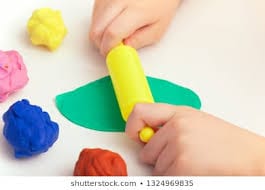
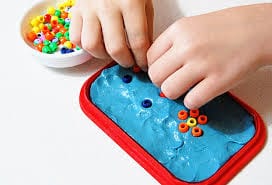
One of the tools that I use frequently in OT is theraputty or play-dough. It is used to increase the strength of the muscles of the fingers and hands overall. Not only is playing with the theraputty or play-dough fun, but it is also used to work on finger isolation, dexterity, bilateral coordination, imaginative play, and much more. Theraputty comes in several color-coded resistance levels. If theraputty is not available, play-dough or clay can be great alternatives. Here are a few things you can do with play-dough or theraputty:
1. Hide objects in the putty and have your child go for a “treasure hunt” with their fingers. This is a great way to give the fingers a fine motor workout without your child even realizing it.
2. Roll the dough/putty into a snake and/or ball. It seems like a simple activity, but your child will have to grade his/her hands to use the appropriate pressure.
3. Make shapes out of the dough/putty and have your child imitate the shapes you create. Make the sun, fish, flowers, etc. This is a great way to practice turn-taking skills as well as hand-eye coordination.
4. “Bake” with it: Knead it into bread and then form a few loaves. You could also roll it out with a rolling pin and then cut out cookies. If you don’t have cookie cutters, just use an upside-down cup.
5. Throw a birthday party: Have your child cut a straw into small pieces and also form a rounded “cake” shape out of the putty/dough. Then have them put the straw “birthday candles” on the cake.
6. Form the putty/dough into a log and use a pair of scissors to cut chunks off. This activity works on cutting skills as well as bilateral coordination. (Your child will have to use both hands together – stabilizing the dough in one hand and working the scissors with the other.)
7. Cut the putty/dough into pieces with a child-safe knife. To make the activity more difficult, the child can practice using a fork to stabilize the putty while he/she cuts it to work on practical feeding/eating and utensil skills.
8. Form the putty/dough into letters and shapes, or have them spell out their name, pet’s name, favorite color, etc.
For more ideas, download the Play-dough or Theraputty Activities document.
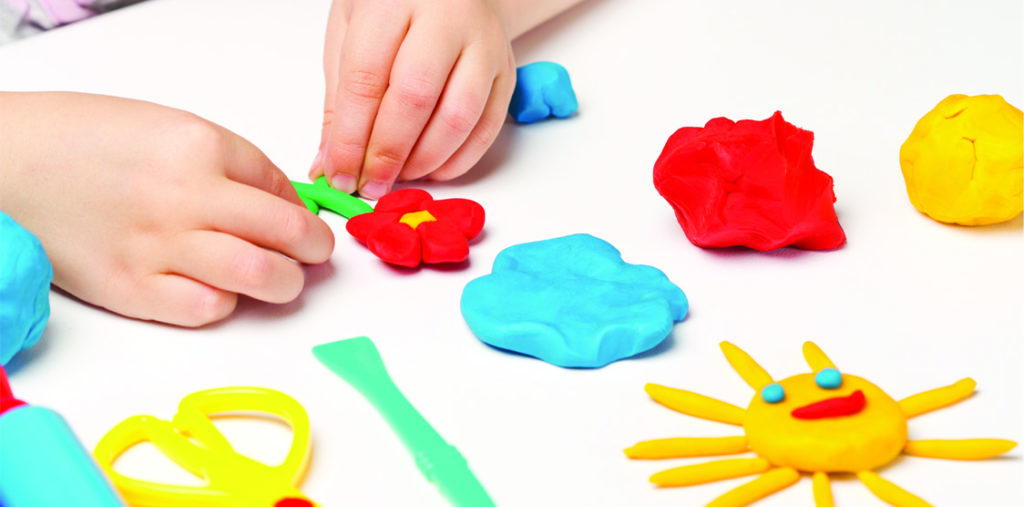
Research supports that movement breaks throughout the day increase attention and increase overall learning. Not to mention, it is important to the overall health of our children. Today, the Movement Monday highlights are brought to you from Lisa Marnell, OTRL from Kids Master Skills. Download a copy for your convenience!
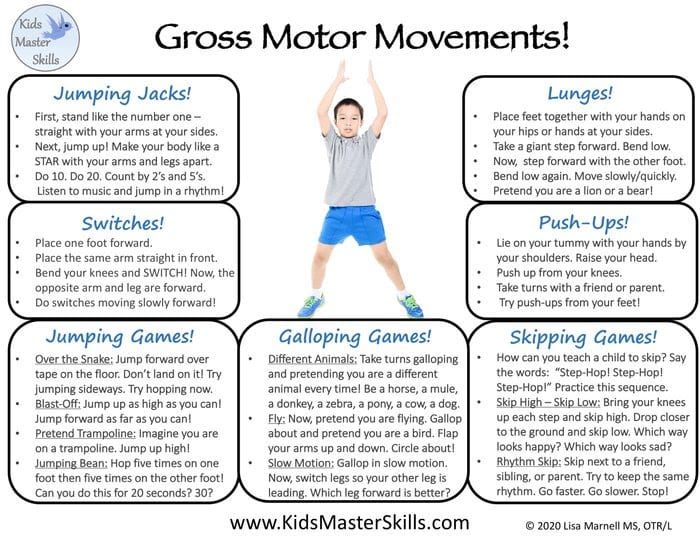
Fun Time Friday is back with another edition of OT Friday Fun Fine Motor Newsletter. I love puzzles! My daughter and I have worked on several puzzles since the stay-at-home order started. It is a great way to work on visual perceptual skills, and for us, to spend quality time together. Here are a couple of the puzzles we have completed this month.


This week the newsletter has several templates to create your own puzzle. First, color the picture. Next, cut out the pieces. Lastly, assemble the puzzle back together.
The newsletter has some great ways to incorporate writing in the activity.
• Have your student write their name on the puzzle.
• On a separate sheet of paper, have your student write a sentence or a story about their puzzle.
• Hide the pieces of the puzzle throughout your house. As your student finds each piece, have them write a letter on a separate sheet of paper or copy the word “puzzle”

Teaching our children critical thinking skills can be a very difficult task. The Atlas Mission has some great critical thinking activities that your children may love. Here is a brief description of some of the activities, but please check out the website below for the complete list with details.
Due to the global pandemic, Learning Without Tears, is offering free 90-day access to their interactive teaching tools. I use the Handwriting Without Tears workbooks, products, and concepts as a part of intervention strategies for all the skills required for writing. The free access will allow your student to participate in an interactive teaching tool appropriate to the level of your student from pre-K through 5th grade. It even has access to interactive cursive writing. The site also has at-home learning packets available for download and will have additional packets for May and June. Please take a look at their website for a fun way to support writing skills.
https://www.lwtears.com/programs/distance-learning
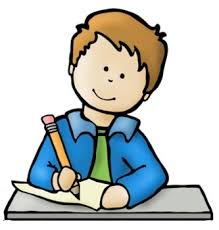
I love to use everyday tools and materials found around the house to work on fine motor skills. Today we are going to use the classic kitchen tongs to promote hand strength, object manipulation and motor coordination. It is a great activity to prepare our little ones for the use of scissors. Use tongs to pick up pompoms, Legos, small bath toys and put them in or take out of containers. You can even add some water for the bath toys because most kids love to add in the water play! How about cooking up some spaghetti and have your child practice picking up the spaghetti with the tongs and placing it a bowl. They might also want to do some sensory play with spaghetti using their hands.
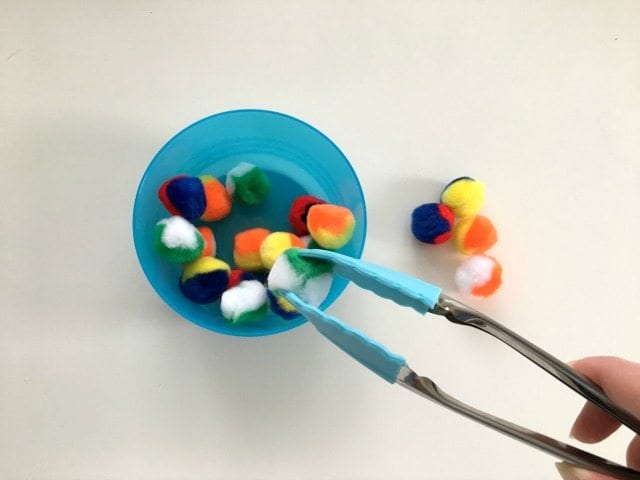
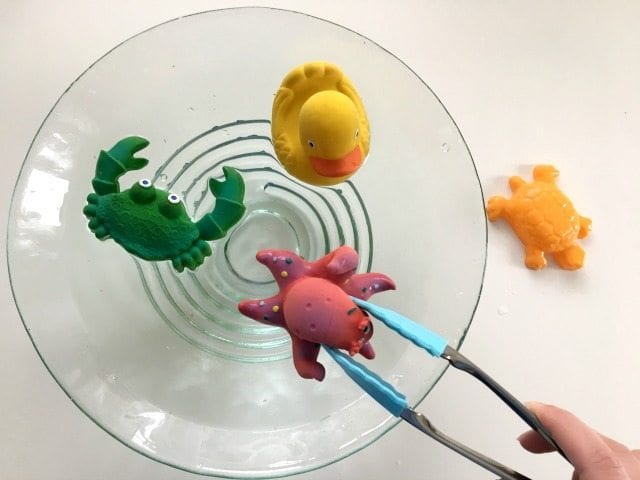
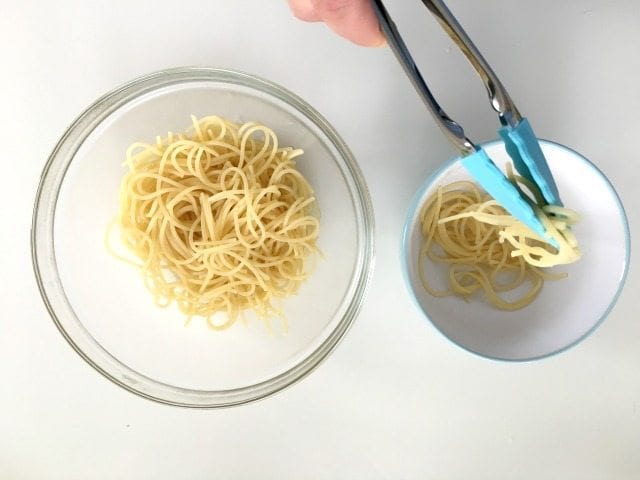
It is very important for our children to participate in movement activities or exercises every day. During occupational therapy sessions, we use movement to increase coordination, body awareness, core strength, endurance, self-regulation, and motor planning. It helps with our overall health and wellness, not just physical health, but also mental health. That would include anxiety, depression, and self-esteem. This week I want to introduce you to Alphabet Exercise by The OT Toolbox. From arm rolls to zigzag run, the exercises are a great way for children to get active. You can be creative with the ABC exercises from randomly selecting a letter/exercise to spelling their name or other words. Get your child really engaged in learning and getting active at the same time by practicing spelling words by using the exercise for the corresponding letter. Follow the link to see the specific exercises and their description.
https://www.theottoolbox.com/alphabet-exercises-for-kids/
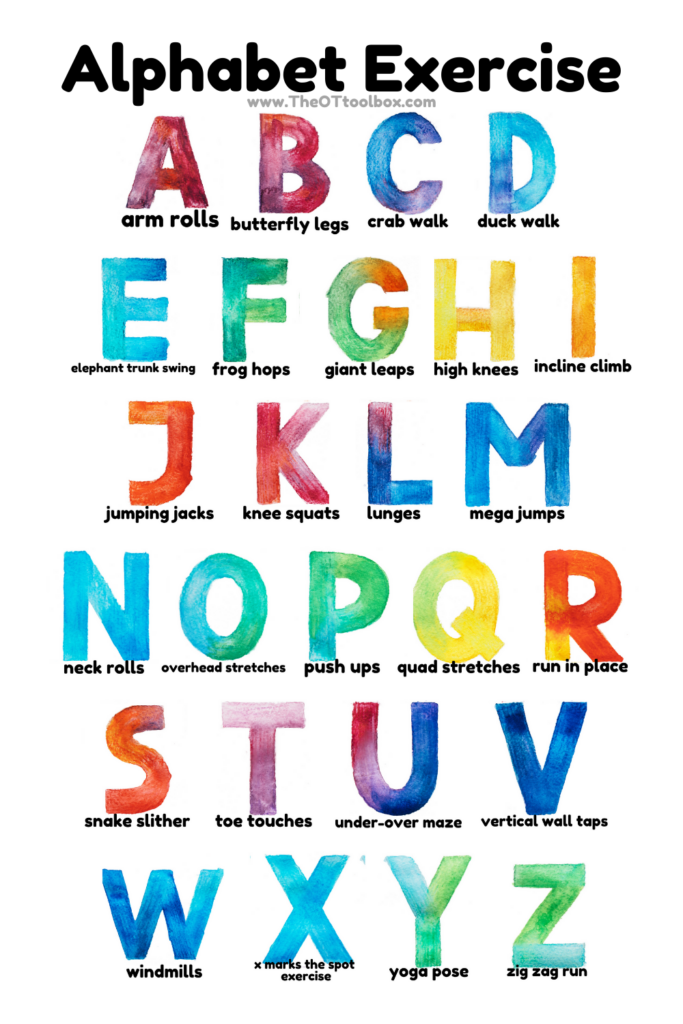
I want Fun Time Fridays to be exactly that – FUN! I will be posting a minimum of one activity to complete with your child and many can be exciting for the entire family. It might be a simple activity, a game, a recipe, etc. An OT colleague from across the nation has also put together an OT Friday Fun Fine Motor Newsletter with activities. The newsletters will be one of the resources I will be sharing with you. Feel free to email me pictures of your child completing the activities and having fun! If you would like, I can also post them on my blog, but only if you give permission!
Email: lillyl@dearbornschools.org
Let’s make paper airplanes! Creating and flying paper airplanes is not only fun, but also a neat way to practice following directions. In order for kids to make airplanes, they need to follow a specific set of steps. It’s a wonderful way to practice fine motor manipulation, visual planning and sequencing skills. Download the newsletter below for the instructions. You can also get creative and try making your own version of a paper airplane. Which one flies the furthest? You can have plane races!
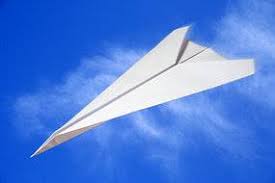
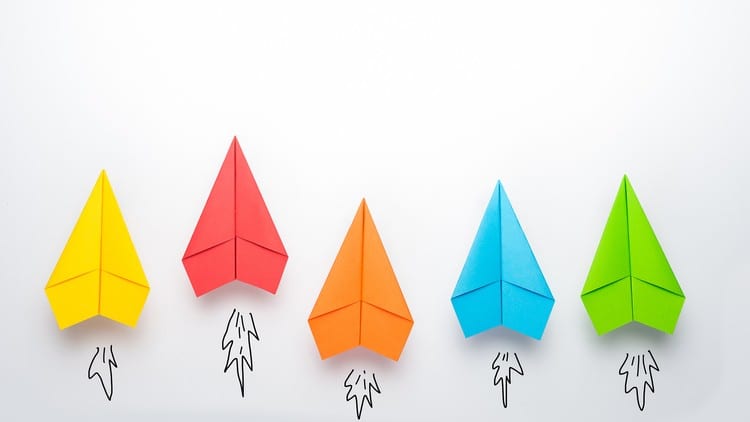
The newsletter also has some great ideas to incorporate writing with the activity.
• Have your child write their name on the outside of the plane.
• On a separate sheet of paper, have your child make a list of all the countries the plane will go.
• Have your child name the plane and write the name on the side.
• On another sheet of paper, have your child write what they would do if they owned a plane.